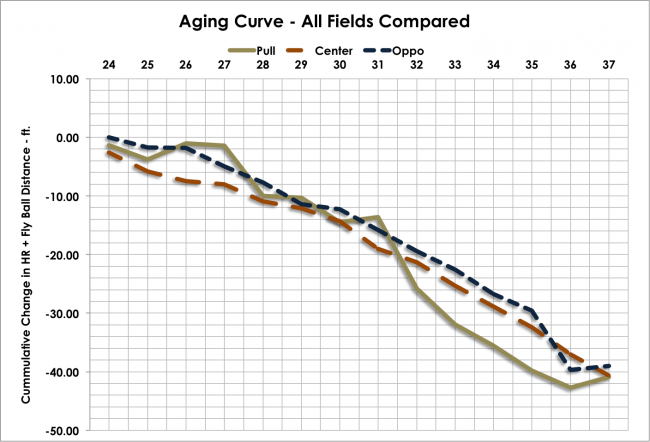Jeff Samardzija’s Ongoing Breakout
Early in the baseball season, I’m always checking the statistical leaderboards to see who sticks out. Sometimes it’s a batter with an incredible ISO (Thames), a hitter with a laughably low BABIP (Schimpf), or in this case, a pitcher whose swinging-strike percentage sits significantly higher than his career mark (Samardzija). While we’re only a few weeks into the season and the simple reasoning that small sample sizes shouldn’t be trusted looms large, occasionally a player makes a change that draws my interest. In Jeff Samardzija’s case, dating back to the last few months of the 2016 season, he’s undergone a noticeable modification in his pitch peripherals.
Pitchers are always making adjustments. Adding in new pitches, subtracting some from their mix, or altering a pitch to complement the rest of their offerings. While it shouldn’t come as a surprise when a pitcher does tweak a pitch, it stands out when the results are as drastic as Samardjiza’s. Let’s take a look at Jeff’s horizontal pitch movement for three of his most-used pitches dating back to the start of the 2016 season to see if anything jumps out.
Horizontal Movement
| Month | Sinker | Slider | Split |
| 3/16 | -9.74 | 1.16 | -6.47 |
| 4/16 | -9.70 | 1.11 | -6.96 |
| 5/16 | -9.55 | 1.17 | -8.13 |
| 6/16 | -9.62 | 0.34 | -7.45 |
| 7/16 | -9.68 | -1.35 | -5.75 |
| 8/16 | -9.71 | -0.83 | -5.77 |
| 9/16 | -9.84 | -0.25 | -5.57 |
| 10/16 | -9.35 | -0.60 | -6.08 |
| Month | Sinker | Slider | Split |
| 3/17 | -9.42 | -0.97 | -6.65 |
| 4/17 | -10.10 | -0.01 | -6.76 |
Nothing crazy happening here, other than a slight shift in the movement of his slider. It went from breaking away from righties, to not breaking at all. A difference of about an inch or two which can certainly add up under the right context. Now, for the vertical movement.
Vertical Movement
| Month | Sinker | Slider | Split |
| 3/16 | 4.77 | 1.10 | 4.27 |
| 4/16 | 4.89 | 1.19 | 5.22 |
| 5/16 | 4.28 | 1.47 | 2.97 |
| 6/16 | 4.18 | 2.56 | 2.89 |
| 7/16 | 4.93 | 3.75 | 5.15 |
| 8/16 | 4.87 | 3.02 | 4.13 |
| 9/16 | 4.91 | 3.22 | 4.01 |
| 10/16 | 6.26 | 3.68 | 4.45 |
| Month | Sinker | Slider | Split |
| 3/17 | 5.17 | 5.39 | 4.51 |
| 4/17 | 6.63 | 6.07 | 4.97 |
Over the course of the 2016 season, the continued refining of the slider is quite apparent. Consistently, month over month, the pitch featured less vertical movement than before. This mix of pitches starts to form around July to August of last year, and takes a huge step forward in 2017. The difference in vertical break between the three currently sits at less than an inch and a half.
Think about that from a batter’s perspective. Three pitches, all coming in with comparable downward break, yet two will feature severe break in on a right-handed hitter (sinker and splitter) and one won’t break in at all (slider). The batter is left guessing about which lateral direction the pitch will go in its final moments before crossing the plate. Previously, with a noticeable difference in vertical movement, the hitter had a better idea of what pitch was coming in. He could see the drop associated with a slider, leading to a more confident prediction of how the pitch would break. While the sinker is thrown harder, around 93, compared to the slider and splitter, both around 85-87, the combination of the three seems to have thrown hitters for a loop, as evidenced by the stark increase in whiffs.
Whiff Percentage
| Month | Sinker | Slider | Split |
| 3/16 | 9.30 | 23.08 | 16.67 |
| 4/16 | 5.26 | 12.00 | 2.94 |
| 5/16 | 5.88 | 10.78 | 8.57 |
| 6/16 | 5.65 | 13.95 | 15.38 |
| 7/16 | 4.67 | 16.10 | 0.00 |
| 8/16 | 6.50 | 7.55 | 26.32 |
| 9/16 | 6.17 | 11.11 | 20.35 |
| 10/16 | 5.56 | 11.11 | 25.00 |
| Month | Sinker | Slider | Split |
| 3/17 | 7.14 | 23.33 | 40.00 |
| 4/17 | 8.41 | 20.75 | 27.59 |
Notice how, starting in August of 2016, the splitter features a huge up-tick in whiffs. This was right when Samardzija was altering the vertical movement of the three to mask their identities. By this season, when the three became even closer in nature, the whiffs skyrocketed. The batter’s utter confusion in trying to classify each offering results in more whiffs.
Samardzija certainly seems to be onto something here. Again, while this is a small sample, it makes me wonder about usefulness of quantifying pitches individually by their velocity and movement. Before, his slider featured more movement, yet Jeff’s cumulative whiffs were lower overall. Once he changed the pitch to look more his like other offerings, the results improved. Perhaps a more holistic approach is necessary when we look at a pitcher’s individual pitch performance. How effective a pitcher’s repertoire appears is more than a sum of its parts, as seen in Samardzija’s recent changes.

